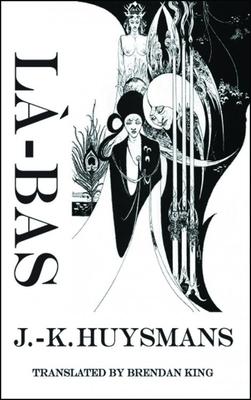
Durtal is a disaffected, middle-aged writer living in Paris, not unlike Huysmans himself. Working on a biography of Gilles de Rais, a 15th-century nobleman and mass murderer widely thought to be the model for Bluebeard, Durtal researches Rais's obsession with alchemy. Through this, he becomes drawn into the underworld of 19th-century satanic worship.
This sounds racy, and some areas of the novel do not disappoint: several setpieces - the description of a crucifixion, Rais's murderous rampage and the climactic debauched satanic mass - are described in vivid and barbaric prose.
The rest follows the conversations of Durtal's friends over elaborate dinners in a gothic bell tower: peppered with references to historical figures and demonology, the obsessive detail at times verges on the comic. Durtal's friend des Hermies reports in the tones of a gossiping housewife that one devil-worshipping priest "fattens fish on consecrated wafers and toxic substances ... fortified by sacrilegious rites ... [then] leaves them to putrefy and extracts their essential oils".
A precursor to the horror fiction of HP Lovecraft and the nihilism of Michel Houellebecq, Huysman's fascination with evil and gore, history and the gothic is clear, although one can be left with the impression of gutter press themes cloaked in a literary veil. As the first, and the darkest, in a tetralogy about conversion to Catholicism there is at least the hope of redemption to follow.'
Sophia Martelli in The Observer
Durtal is a disaffected, middle-aged writer living in Paris, not unlike Huysmans himself. Working on a biography of Gilles de Rais, a 15th-century nobleman and mass murderer widely thought to be the model for Bluebeard, Durtal researches Rais's obsession with alchemy. Through this, he becomes drawn into the underworld of 19th-century satanic worship.
This sounds racy, and some areas of the novel do not disappoint: several setpieces - the description of a crucifixion, Rais's murderous rampage and the climactic debauched satanic mass - are described in vivid and barbaric prose.
The rest follows the conversations of Durtal's friends over elaborate dinners in a gothic bell tower: peppered with references to historical figures and demonology, the obsessive detail at times verges on the comic. Durtal's friend des Hermies reports in the tones of a gossiping housewife that one devil-worshipping priest "fattens fish on consecrated wafers and toxic substances ... fortified by sacrilegious rites ... [then] leaves them to putrefy and extracts their essential oils".
A precursor to the horror fiction of HP Lovecraft and the nihilism of Michel Houellebecq, Huysman's fascination with evil and gore, history and the gothic is clear, although one can be left with the impression of gutter press themes cloaked in a literary veil. As the first, and the darkest, in a tetralogy about conversion to Catholicism there is at least the hope of redemption to follow.'
Sophia Martelli in The Observer
Paperback
$13.99